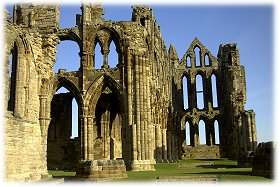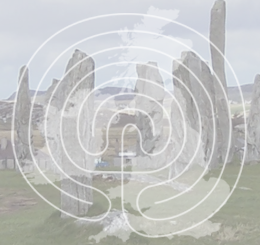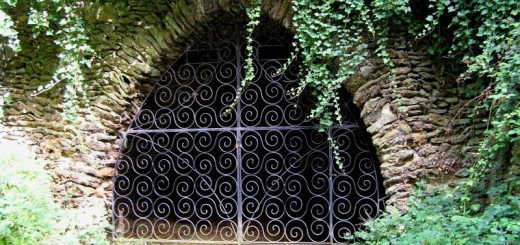Madron Holy Well
One of the most widely known wells in Cornwall, Madron Holy Well is still used, and has been the scene of some miraculous cures in the past. About 100 metres away are the remains of the Madron Well Chapel.
Rags and other objects are left to rot away in the hope of cures, and as votive offerings.
Directions: Northwest of Madron from a footpath




Re: Madron Holy Well
MADRON: ST. MADERN WELL.
To this well, about a mile to the north, in the parish of St. Madron, many extraordinary properties have been ascribed. Dr. Borlase says: "The soil round this well is black, boggy, and light; but the strata through which the spring rises is a gray moorstone gravel. Here people who labour under pains, aches, and stiffness of limbs, come and wash; and many cures are said to have been performed, although the water can only act by its cold and limpid nature, as it has no mineral impregnation." "Its fame in former ages was greater for the supposed virtue of healinge which St. Madderne had thereinto infused, and manie votaries made anuale pylgrimages unto it, as they doe even at this day, unto the Well of St. Winnifrede beyond Chester in Denbighshire, whereunto thousands doe yearelye make resort: but of late St. Maderne hath denied his (or her I know not whether) pristine ayde; and he is coye of his cures, so now are men coy of comynge to his conjured well, yet soom a daye resort. Though this writer seems to despise the efficacy of these waters, the tradition of their virtues still remained amongst the Cornish, only a century ago. Borlase said: To this miraculous fountain, the uneasy, the impatient, the fearful, the jealous, and the superstitious, resort to learn their future destiny from the unconscious water. By dropping pins or pebbles into the fountain, by shaking the ground around the spring, or by continuing to raise bubbles from the bottom, on certain lucky days, and when the moon is in a particular stage of increase or decrease, the secrets of the well are presumed to be extorted. This superstition continued to prevail up to the beginning of the present century, and is still spoken of with respect by some, particularly the aged. In the year 1640, John Trelille, who had been an absolute cripple for sixteen years, and was obliged to crawl upon his bands by reason of the close contraction of the sinews of his legs, upon three several admonitions in his dreams, washing in St. Madern’s Well and sleeping afterwards in what was called St. Madern’s bed, was suddenly and perfectly cured. Of all writers, Bishop Hall, sometime Bishop of the diocese of these western parts, bears the most honourable testimony to the efficacy of this well. In his Mystery of Godliness, when speaking of the good office which angels do to God’s servants, the Bishop says: Of whiche kind was that noe less than miraculous cure whiche at Madern’s Well, in Cornwall, was wrought on a poor cripple, whereof, besides the attestation of many hundreds of the neighhours, I saw him able to walk and get his own maintenance. I took strict and impartial examination in my last triennial visitation. I found neither art nor collusion, the cure done, the author an invisible God. At the side of Madron well, which lies on the moor, a mile or so from the church, is a stone seat, formerly known as St. Madron’s bed (Madron is spelt Madden in some old manuscripts). It was upon this that impotent folk reclined when they came to try the cold-water cure. There was also a chapel, about 200 yards away. The chapel was 25 feet by 16 feet, and contained an altar ; a sketch of the ground-plan is given above. It was partially destroyed by Cromwell; but the ruins remain, and still retain the old stone-altar–a rough slab of granite, with a small square hole in the centre, A. Those who were benefited gave alms to the poor and to the church. This was done down to the middle of the seventeenth century. The well of St. Madderne is still frequented at the parish feast, which takes place in July. On the top of the ruined wall is an old thorn-bush, covered with bits of rag fluttering in the wind, tied there as votive offerings.
[The Legendary Lore Of The Holy Wells Of England by Robert Charles Hope (1893)]